The market for blockchain technology will be worth $69.04 billion by 2027, with the number of registered blockchain wallets exceeding 70 million. Government, finance, insurance, and personal identity security are just a few of the many industries that technology can revolutionize. The comparison Polkadot vs Ethereum is a systematic breakdown of their blockchains along with a parallel comparison for the comprehension of all the features they provide.
The technology is being studied by more than 90% of banks in the US and Europe. Particularly, the first thing to understand is that Ethereum and Polkadot share a history. If Ethereum never succeeded, it is very likely that Polkadot would have never been an idea. This assumption can be made because Polkadot was founded by Ethereum co-developer, Gavin Wood.
Polkadot (DOT) and Ethereum (ETH) are tokens that run their chains. Their chains aim to increase crypto’s usability in different ways, allowing users to work together on projects and complete transactions. Due to price increases and the buzz surrounding their projects, both tokens have experienced tremendous growth in popularity. Let’s examine how the two tokens compare and contrast.
With timely evolution and upgrades, there are generations of blockchains with different capabilities like transactions, cryptocurrency, microtransactions, smart contracts, DAO, dApps, scalability, governance, tokenization efficiency and interoperability.
Also Read:
- Ethereum Price Prediction 2022-2031: Will ETH reach $8000 soon?
- Vitalik Buterin publishes blueprint for ETH 2.0
- Polkadot Price Prediction 2022-2031: Is DOT a Good Investment?
- What is SOL crypto? Learn about “Ethereum killer”
- Ethereum killer Solana in line to become next Bitcoin – Sam Bankman Fried
- Top 5 Cryptocurrencies Affected by The Ethereum Merge
- How to buy Ethereum
- How to Buy Polkadot Coin
What is Ethereum?
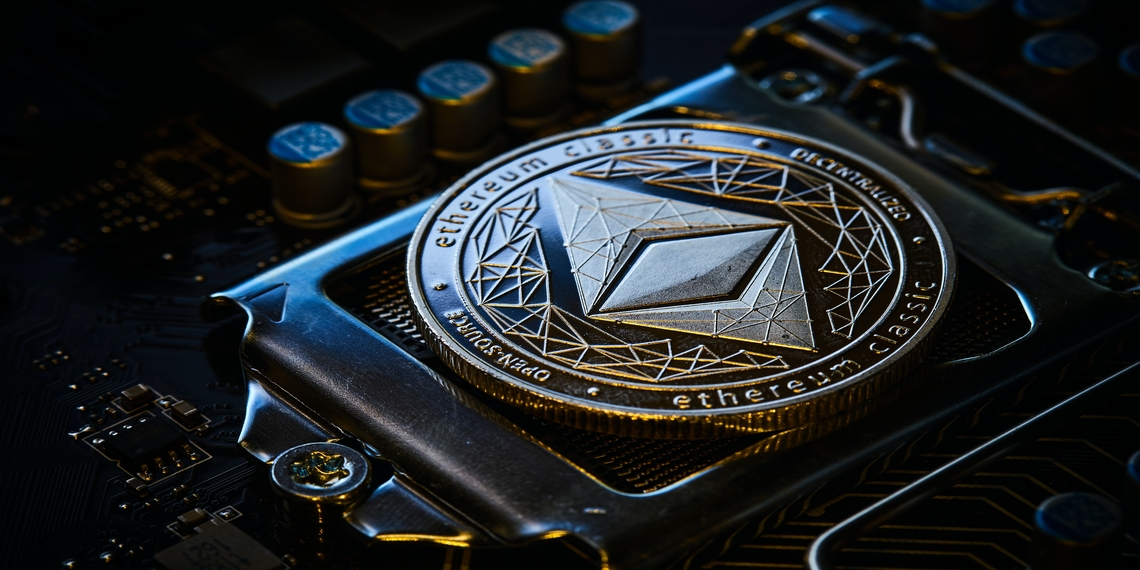
Ethereum aims to offer services with a significant financial impact. Anybody anywhere can receive transactions sent using the Ethereum network. The development team is very concerned with this process’ ability to scale, intending to enable quick and effective transactions between anyone using Ethereum 2.0. Various situations, from supermarkets to investment banks, can benefit from this.
What is Polkadot?
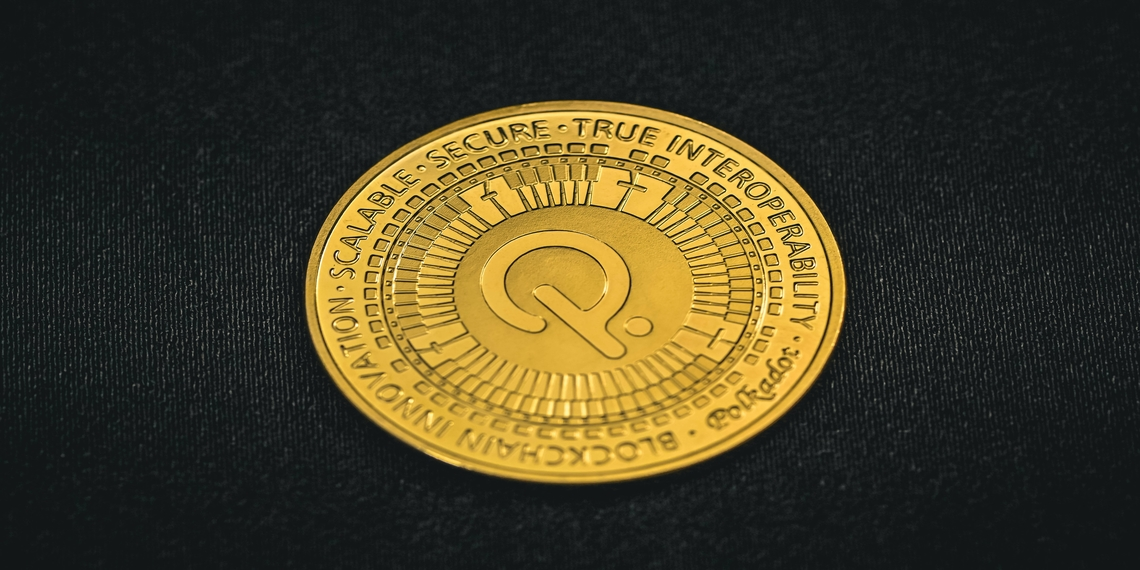
The Polkadot multichain network can handle transactions involving multiple parallel chains or parachains. It can process up to 1,000,000 transactions per second thanks to the network’s more than 100 chains.
These chains can be beneficial in several circumstances. You can communicate with people on a variety of other chains, which promotes decentralization. The loan industry is one of DOT’s leading applications. On the Polkadot network, a project called Centrifuge is currently under construction.
Its objective is to link traditional money with DeFi by offering crypto loans and enabling using mortgages, bills, and other tokens as security. They intend to spread the system across the blockchain using Polkadot.
Comparing Ethereum vs Polkadot blockchains
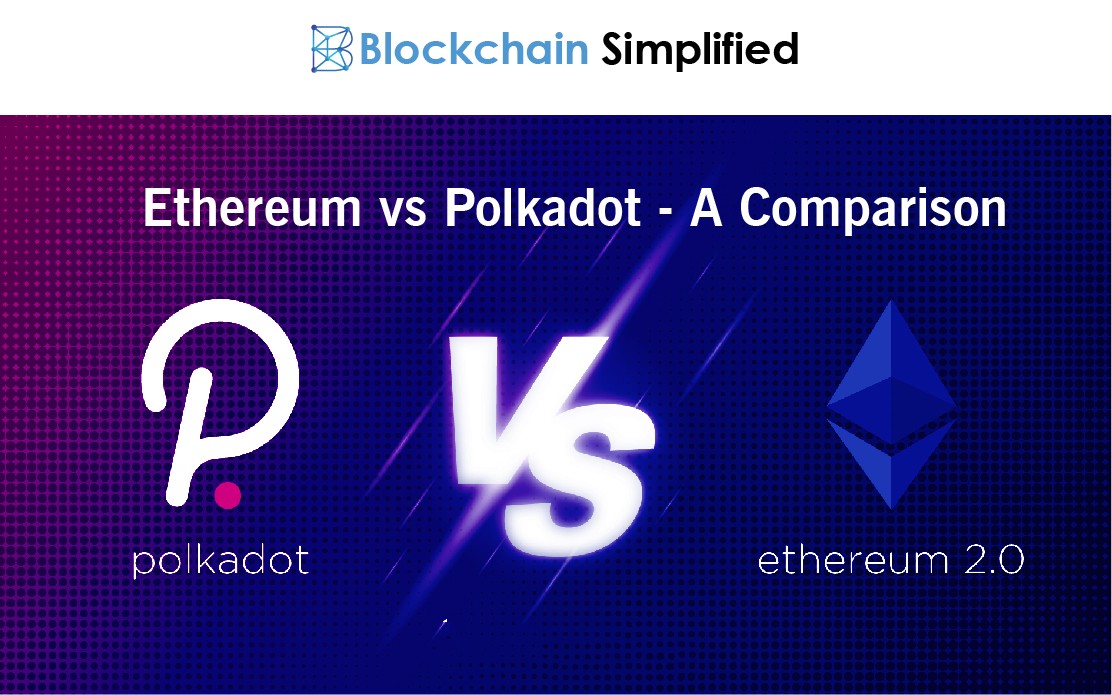
The most well-known blockchain powered by intelligent contracts introduced in 2015 is Ethereum (ETH). The Ethereum Killers was the original name given to Ethereum’s newest platform in the hopes that it would help Ethereum regain its dominance.
Polkadot may offer a fantastic opportunity for this job even though there isn’t a project close at hand just yet. It was credited to Gavin Wood, a remarkable innovator. He is the charismatic founder of Polkadot, a co-founder of Ethereum, and the creator of Solidity, a programming language for creating Ethereum smart contracts.
Comparison of Ethereum vs Polkadot
As blockchain technologies are geared toward developers, Polkadot has gained popularity. It is meant to aid new users in understanding the distinctions and assisting in creating the best platform from the beginning. Both projects only partially overlap at a higher level.
Ethereum is a platform for using logic-based intelligent contracts that manage native assets or states on an Ethereum chain. With a way to connect numerous different blockchains, Polkadot offers a framework for creating your blockchains.
Despite similarities, very different strengths
Similarities between Ethereum and Polkadot include their shared goal of giving developers a place to make decentralized applications. Both platforms have smart contract functionality, which is based on Ink! for Polkadot and Solidity for Ethereum.
Both platforms are pursuing a scaling strategy based on parallelized execution as we move toward Ethereum 2.0. Each execution thread is referred to as a parachain or parathread in Polkadot and a shard in Ethereum 2.0. Wasm will serve as the foundational technology for on-chain logic and state transitions in both Polkadot and Ethereum 2.0.
But there are significant differences between Polkadot and Ethereum. Design goals are among the biggest differences. While Polkadot envisions assisting people in creating entire blockchains and integrating these blockchains with one another, Ethereum aims to be a platform for distributed finance and smart contract execution.
Why is Polkadot considered an “Ethereum killer”?
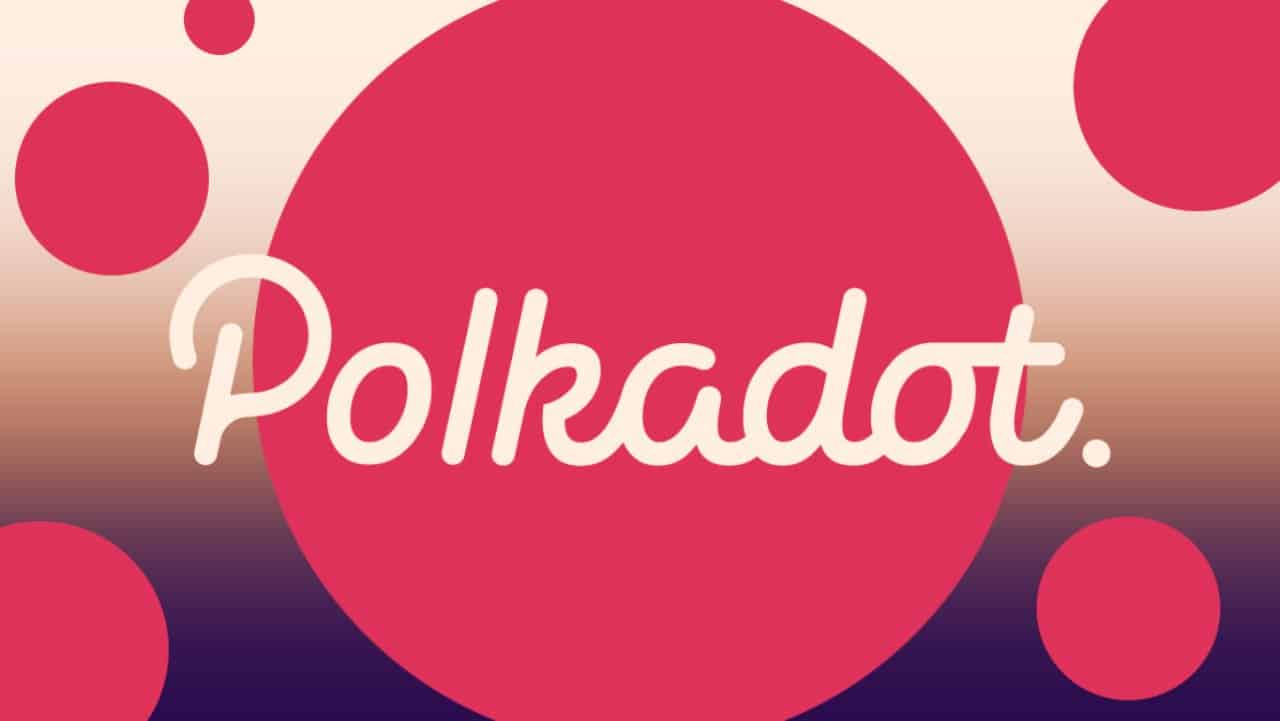
A few emerging blockchain platforms that may unseat Ethereum have been dubbed “Ethereum killers.” The most popular ones are Polkadot, Cardano, Solana, and EOS. Polkadot is one of the few projects with several advantages over its much more significant, well-established rival, although many others claim to be Ethereum’s rival.
As a potential substitute for Ethereum that addresses its current scalability issues, Polkadot has made a name for itself. Polkadot’s testnet Kusama is already operational, and some exciting projects like Parallel Finance have added DeFi (decentralized finance) to the platform. The ETH 2.0 testnet was recently launched and could still undergo many changes.
Even though both platforms are fierce competitors in the sharding race, Polkadot is at least a few years ahead. At the same time, we must not undervalue Ethereum’s robust developer community and expansive ecosystem, which are still thriving despite the difficulties with scalability and interoperability. The leading platform for dApp development is still Ethereum, so Polkadot’s founders must convince developers to use their ecosystem over Ethereum.
It is important to note that many of Ethereum’s rivals are working to create faster, cleaner blockchains. However, Polkadot has even loftier objectives; it wants to overcome the interoperability problem by developing the platform into an ecosystem where all dApps can collaborate.
The parachain model was created with the belief that the future of Web3 will involve many different types of blockchains working together. Just as the current version of the internet caters to different needs, blockchains need to be able to provide a variety of services. Parachains solve this
Gavin Wood
Polkadot vs Ethereum: Interoperability of Blockchain
Sharing data and information with Ethereum is simple as long as you remain connected to the Ethereum blockchain. This also applies to alternative currencies based on Ethereum. However, unlike Polkadot, Ethereum does not support cross-blockchain interoperability.
The Polkadot platform allows any blockchain networks to connect and gain access to all of its numerous parachains. The capacity to freely exchange information between different blockchains will be even more important as blockchain technology becomes more widely adopted.
An exclusive blockchain might be used by a private school to store its student records, for instance. This private blockchain could use Polkadot to send grades directly to the blockchain of a college or university.
Polkadot vs Ethereum: Smart contracts
On the blockchain, smart contracts store data, execute code, and automate processes. They can facilitate transactions and improve blockchain operations once they are programmed and added to the blockchain. Frequently, the programs are created using their particular coding languages.
On a public blockchain, a smart contract can be installed by anyone. Additionally, you can incorporate elements of other intelligent contracts into your own. Smart contracts cannot be deleted or have actions taken against them reversed. Smart contracts are very similar to vending machines because they can run automatically and only need one person to complete a task.
On their respective chains, Polkadot and Ethereum both support smart contracts. Both function very similarly, but the Ethereum ecosystem aims to be scalable, while the Polkadot ecosystem is more focused on creativity.
Proof of Work vs. Proof of Stake
Polkadot uses a Proof of Stake system. Validators working for a proof-of-stake system lock up money in exchange for the chance to confirm transactions and collect block rewards. With the Merge, Ethereum also uses the Proof of Stake consensus.
The users who verify transactions receive block rewards, a portion of the transaction fees. Block rewards, however, can only be given to one individual. Users pool their money to stakes to share the rewards after collectively placing a large amount of currency at risk. Users must demonstrate that they are invested in the coin to earn rewards.
This helps Polkadot ensure strong validity guarantees with fewer validators per shard. Meet Qtum – a solution acting as a bridge to communicate with multiple Virtual Machines, including the Ethereum Virtual Machine Staking mechanics. Ethereum 2.0 is a proof-of-stake network that bundles 32 blocks during each round of validation. These bundles are also known as epochs.
Validators get rewards once per epoch (approximately in 6.5 minutes). The Beacon Chain randomly groups stakers into committees and assigns them to a particular shard.
This system enables investors to relinquish control of their money while it is staked. By doing this, fraud is avoided.
Ethereum vs Polkadot: Market Capitalization
In terms of the most used cryptocurrencies, Polkadot has been hovering around positions 9 to 12, outperforming highly publicized coins like Dogecoin and Litecoin. With a much higher market capitalization, Ethereum has been a stable #2 for some time.
The market capitalization of Ethereum, however, is more than 120 times greater than that of Polkadot. A lot of money has been invested in Ethereum by numerous large and institutional investors. Investors fervently support the uses of Ethereum and its chain. Polkadot also has significant room for growth.
For many investors, the focus on connectivity and efficiency can be exciting. Polkadot’s market cap might rise significantly if institutional investors start to pay attention to the company. Both tokens have enormous demand and significant growth potential.
Polkadot vs Ethereum: Use of Parachains
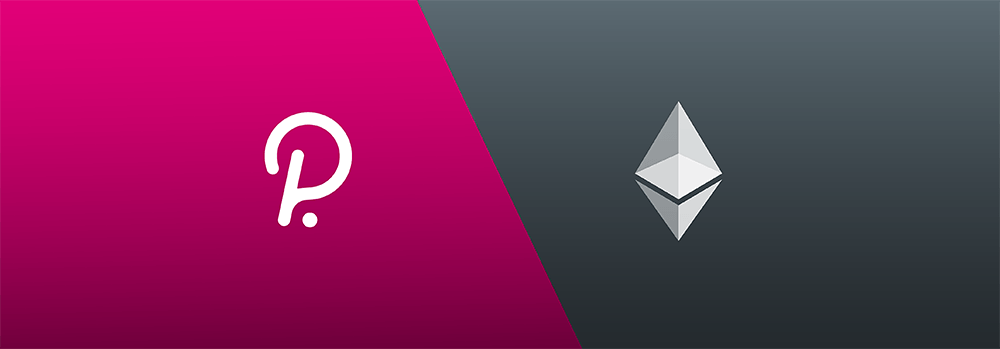
Each token is distinctive in its way. While Ethereum aims to offer a secure public blockchain for high-value transactions, Polkadot aims to connect chains. The adoption of Ethereum is more robust. These days, it serves a lot more practical purposes.
The upside of DOT, however, might be more tremendous. A newer coin, its price has already increased significantly. Hence might portend more to come. In either case, both tokens have the potential to alter the course of cryptocurrency.
Is Polkadot a good investment?
A distinctive asset called Polkadot has become very popular in the crypto world. It enables the creation of new chains and uses ground-breaking technology to decentralize the blockchain further. On the other hand, it has potent rivals who might eventually out-compete Polkadot.
However, Polkadot has set itself apart by developing cross-chain features to link various blockchains seamlessly. The price will ultimately depend on Polkadot’s future endeavors and applications.
Investing in Polkadot
The crypto asset Polkadot is simple to use. DOT can be purchased on the majority of the major cryptocurrency exchanges in the world for developers interested in bidding on a Polkadot parachain or investors looking to buy tokens for speculation. Through the publicly traded Osprey Polkadot Trust (ODOT), which is traded on the OTCQX over-the-counter market, investors can also gain exposure to Polkadot.After being bought, DOT tokens can be stored in a cryptocurrency wallet.
There are both offline and online cryptocurrency wallets (hot wallet) (cold wallet). There are greater security risks with online wallets. Additionally, make sure the crypto wallet accepts Polkadot tokens. Investors should keep in mind that investing in Polkadot, like all cryptocurrencies, is very speculative and risky. Consider talking to a financial advisor first if you’re considering buying DOT tokens. Given the erratic nature of cryptocurrencies, you should never invest more than you can afford to lose.
Which blockchain is best for your project?
Which platform should you choose, then? As always, it is based on your objectives. The two platforms barely touch one another. Like its predecessor, Ethereum 2.0 wants to become the standard platform for smart contract deployment and distributed finance. On the other hand, Polkadot plans to assist developers in creating their blockchains and integrating them.
The main advantages of Ethereum are its sizable and well-established community and its vast ecosystem of developer tools, guides, and other resources. The DeFi space is primarily built on Ethereum, and as was the case with ERC-20, Ethereum standards frequently become the industry standards.
The Substrate, a development framework for new blockchains, is Polkadot’s greatest strength. Developers can test their ideas on a sizable canvas, thanks to Polkadot. It significantly reduces the time and cost necessary to build a new blockchain.
Therefore, choose Ethereum 2.0 if your future application can be expressed simply as a smart contract, if you don’t need control over the system’s underlying economics, or if you need interoperability with another project within the Ethereum ecosystem.
On the other hand, if your application requires higher transaction throughput and you want complete control over the environment, storage, and economics that it operates under, Polkadot will meet your needs. It is also a secure option if you need integration across multiple blockchains.
Is Polkadot the key to the blockchain interoperability problem?
One of the main issues with the blockchain is interoperability because different platforms can currently not communicate with one another. But Polkadot steps in to the rescue here. The platform’s goal is to join various chains together and streamline cross-chain transactions as much as possible.
The platform is based on these fundamental ideas. Regarding Ethereum, the platform’s main drawback is its lack of interoperability. Data transmission from Ethereum to other chains is challenging. You should consider this before selecting your platform because it is unlikely that the issue will be resolved in the near future.
Ethereum 2.0 vs Polkadot: DeFi Project Solution
Both Ethereum 2.0 and Polkadot provide promising sharding-based technologies for solving scalability problems, an important challenge on the blockchain. Sharding enhances both network performances without increasing the degree of decentralization of data.
Although each platform uses spline technology, it can be difficult for some companies to decide on Polkadot as their product. The factors influencing market capitalization must include the architectural structure consensus model.
Shards of Ethereum 2.0, which are essentially just blockchains with the Ethereum Wasm interface, are in addition to the main chain, known as Beacon Chain. Also included in Ethereum 2.0 will be so-called side chains, which can be used to communicate with chains that are not covered by the platform’s finality protocol.
Relay Chain, the platform’s central component in charge of coordinating its linked parachains, is the foundation of Polkadot. The Relay Chain does not support smart contracts in order to maintain its general functionality. Parachains instead receive this capability.
Each parachain is a blockchain that is capable of operating its consensus algorithm, tokens, and other features independently. Parachains are not limited to a single interface like Ethereum Wasm, unlike Ethereum 2.0. Instead, they are free to design their own interface and logic.
What other blockchains are aiming to overtake Ethereum?
Last but not least, since Polkadot, Solana, and Cardano are dubbed “Ethereum killers,” it is necessary to compare them to Ethereum. Even though Ethereum is by far the second-largest cryptocurrency on the market, users and developers have been criticizing it for a number of its flaws.
For instance, even though Ether tokens can be divided up to 18 decimal places, allowing for quintillions of fractional units, the disadvantage of precise micro-transactions has been eliminated in practice due to the high gas costs. Users may occasionally pay hundreds of dollars in gas fees.
Gas fees are required for the security of the system overall, and to protect the system from being stalled by runaway programs. But as the value of Ether has risen, gas fees for running smart contracts has also risen and has made certain use cases prohibitively expensive.
The energy-intensive nature of mining, the reduction in gas fees, and other technical changes are yet to be seen even though more than a million Ether have been burned since the London Hard Fork, even though Ethereum is being upgraded to fix the slow transaction speed.
Analysts generally agree that Ethereum will succeed, but they also predict that its competitors will gradually take market share from it. In addition, among the many blockchain projects that promise to outperform Ethereum, Solana, Cardano, and Polkadot are just three.

What does the future hold for both platforms?
Collating our discussions, the comparison table for Ethereum and Polkadot highlights their particular advantages and disadvantages of use.
| Blockchain | TPS | Smart Contract | Scalability | Interoperability | Governance | Gas Fee | Deposit Time | Block Time |
| Ethereum | 30 | Yes – EVM | No | No | No | $3 – $15 | 5 min | 14 sec |
| Polkadot | 166.6 | Yes – EVM & Wasm | Parachains | Yes | Yes | Near to 0 | 2 min | 6 sec |
Polkadot and Ethereum 2.0 rely on sharding-based protocols and are considered up-and-coming platforms. Ethereum continues to rule the DeFi and smart contracts markets despite the criticism leveled at it, and its hold is unlikely to weaken.
Although Polkadot and other alternative blockchains like Solana or Cardano may now have the chance to gain more market share and eventually challenge Ethereum’s market dominance, this is dependent on the delays in the launch of Ethereum 2.0.
But it also becomes evident that the platforms can coexist once you consider that the DeFi industry has grown by a factor of88X in just one year. Therefore, rather than relying solely on one dominant blockchain, the DeFi world of the future is likely to be based on several robust platforms.
Final word
Despite all the talk about finding the next Ethereum, today’s cryptocurrency market is not the same as in 2015 when Vitalik Buterin introduced Ethereum. The market is much more developed, there are many more cryptocurrencies, and the technology has advanced. If the cryptocurrency market keeps going in the same direction, it’s unlikely that another dominant player will host 90% of the applications on its network.
Noting that Ethereum is still a significant player is also essential. It is undergoing a staged upgrade to address its scalability and sustainability issues. Later this year, when a greener validation model is merged, it will make a significant advancement. However, the complete upgrade won’t be visible until at least 2023.
Since many developers are already familiar with the system, they will tolerate the higher costs, giving Ethereum a first-mover advantage. Additionally, Ethereum has more real-world experience than any other cryptocurrency on this list, making it more reliable regarding security and technical outages.
It might be more worthwhile to look for five or six intelligent contract cryptos that could join Ethereum in dominating the market instead of searching for the next Ethereum killer.





